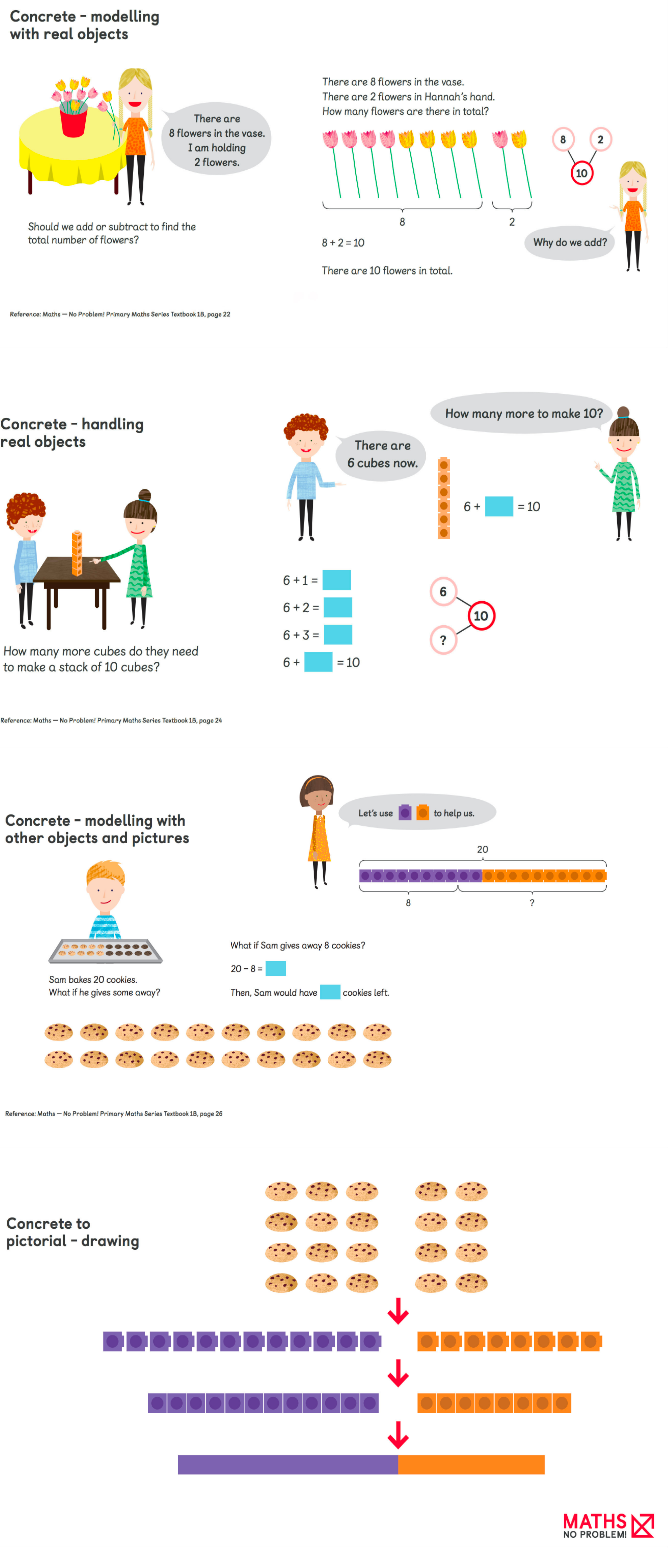Bar Modelling
Bar modelling is an essential maths mastery strategy. A Singapore-style of maths model, bar modelling allows pupils to draw and visualize mathematical concepts to solve problems.
At a glance
- A versatile maths model strategy that can be used across a wide range of concepts and topics
- Gives pupils a powerful and adaptable strategy for solving increasingly difficult problems
- Allows pupils to understand on a conceptual level what occurs when using complex formulas (for example, algebra)
- Draws on the Concrete, Pictorial, Abstract approach
- Used extensively in Singapore-style maths mastery textbooks and workbooks
- Based on three pedagogical theorists — Jerome Bruner, Zoltan Dienes, and Alan J Bishop
Bar modelling and the CPA approach
The bar model method draws on the Concrete, Pictorial, Abstract (CPA) approach — an essential maths mastery concept. The process begins with pupils exploring problems via concrete objects. Pupils then progress to drawing pictorial diagrams, and then to abstract algorithms and notations (such as the +, -, x and / symbols).
The example below explains how bar modelling moves from concrete maths models to pictorial representations.

As shown, the bar method is primarily pictorial. Pupils will naturally develop from handling concrete objects, to drawing pictorial representations, to creating abstract rectangles to illustrate a problem. With time and practice, pupils will no longer need to draw individual boxes/units. Instead, they will label one long rectangle/bar with a number. At this stage, the bars will be somewhat proportional. So, in the example above, the purple bar representing 12 cookies is longer than the orange bar representing 8 cookies.
The lasting advantages of bar modelling
On one hand, the Singapore maths model method — bar modelling — provides pupils with a powerful tool for solving word problems. However, the lasting power of bar modelling is that once pupils master the approach, they can easily use bar models year after year across many maths topics. For example, bar modelling is an excellent technique (but not the only one!) for tackling ratio problems, volume problems, fractions, and more.
Importantly, bar modelling leads students down the path towards mathematical fluency and number sense. Maths models using concrete or pictorial rectangles allow pupils to understand complex formulas (for example, algebra) on an intuitive, conceptual level. Instead of simply following the steps of any given formula, students will possess a strong understanding of what is actually happening when applying or working with formulas.
The result? A stable, transferable, and solid mathematical framework for approaching abstract concepts. Combined with other essential maths mastery strategies and concepts, bar modelling sets students up for long-term maths success.
Find out how proven mastery strategies, world-class training, and step-by-step teacher guides can give you and your school a maths boost.
Learn MoreTransform Your Maths Assessment
Insights — our online assessment tool — gives you instant, powerful data to identify gaps and improve results.
